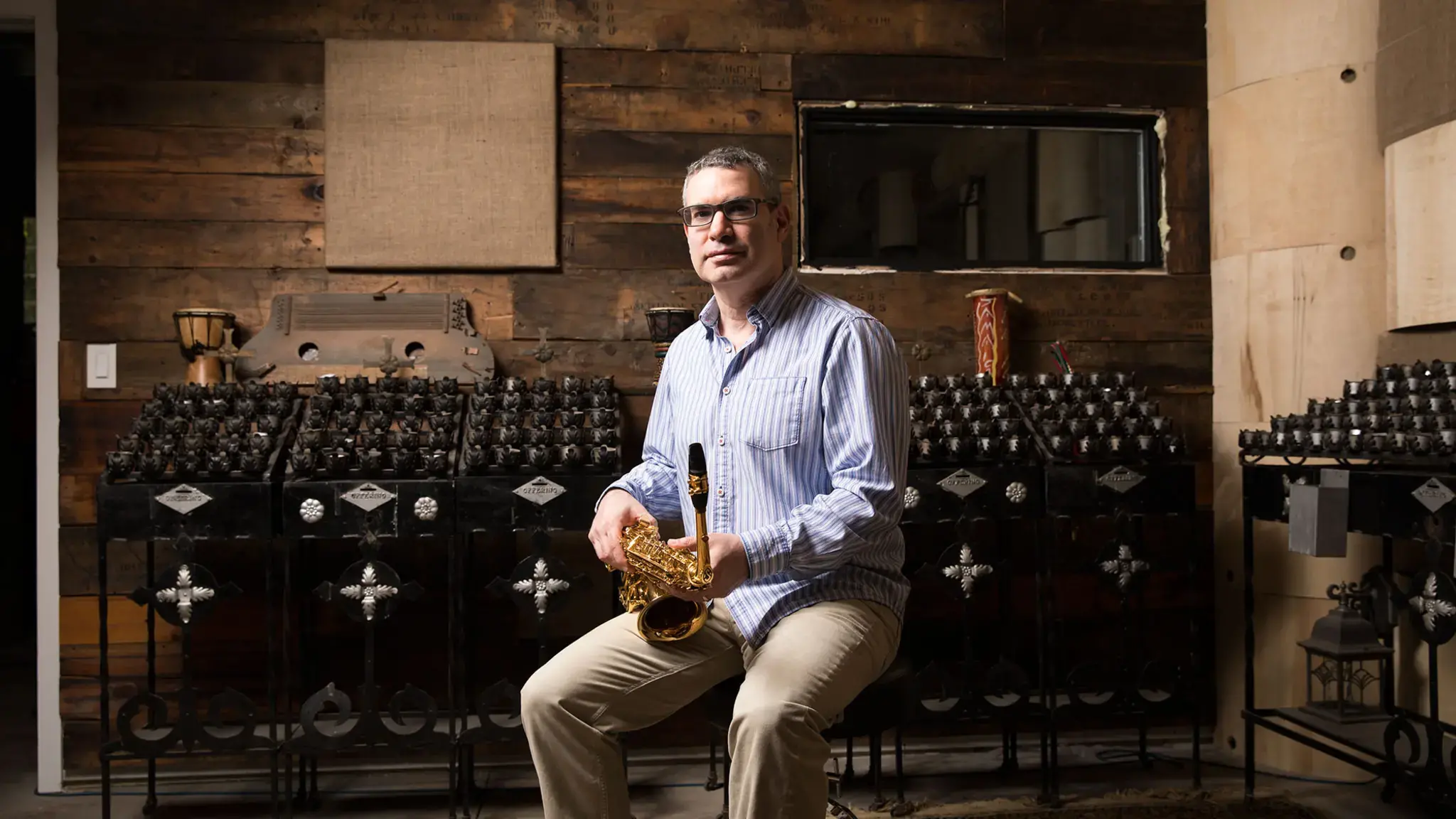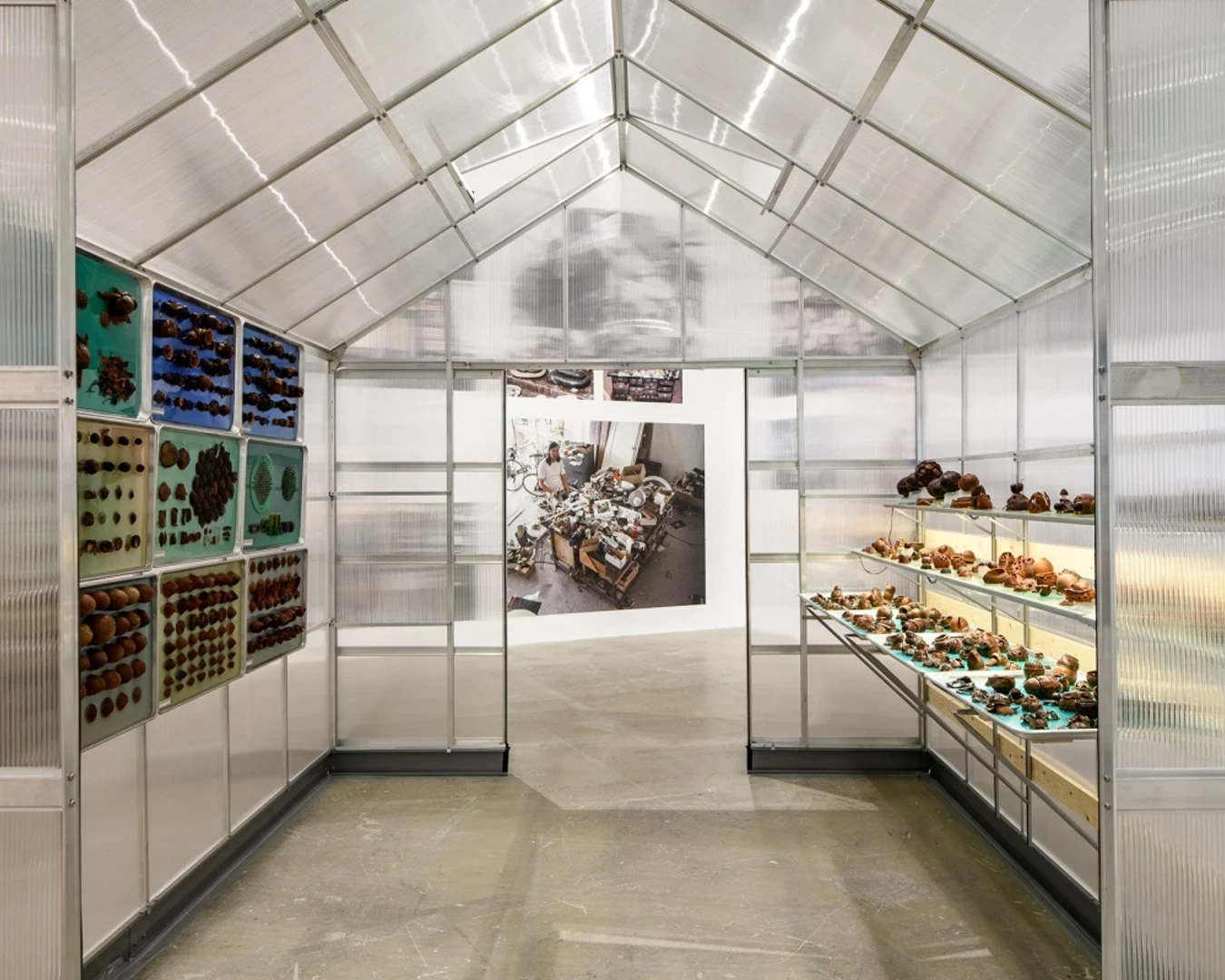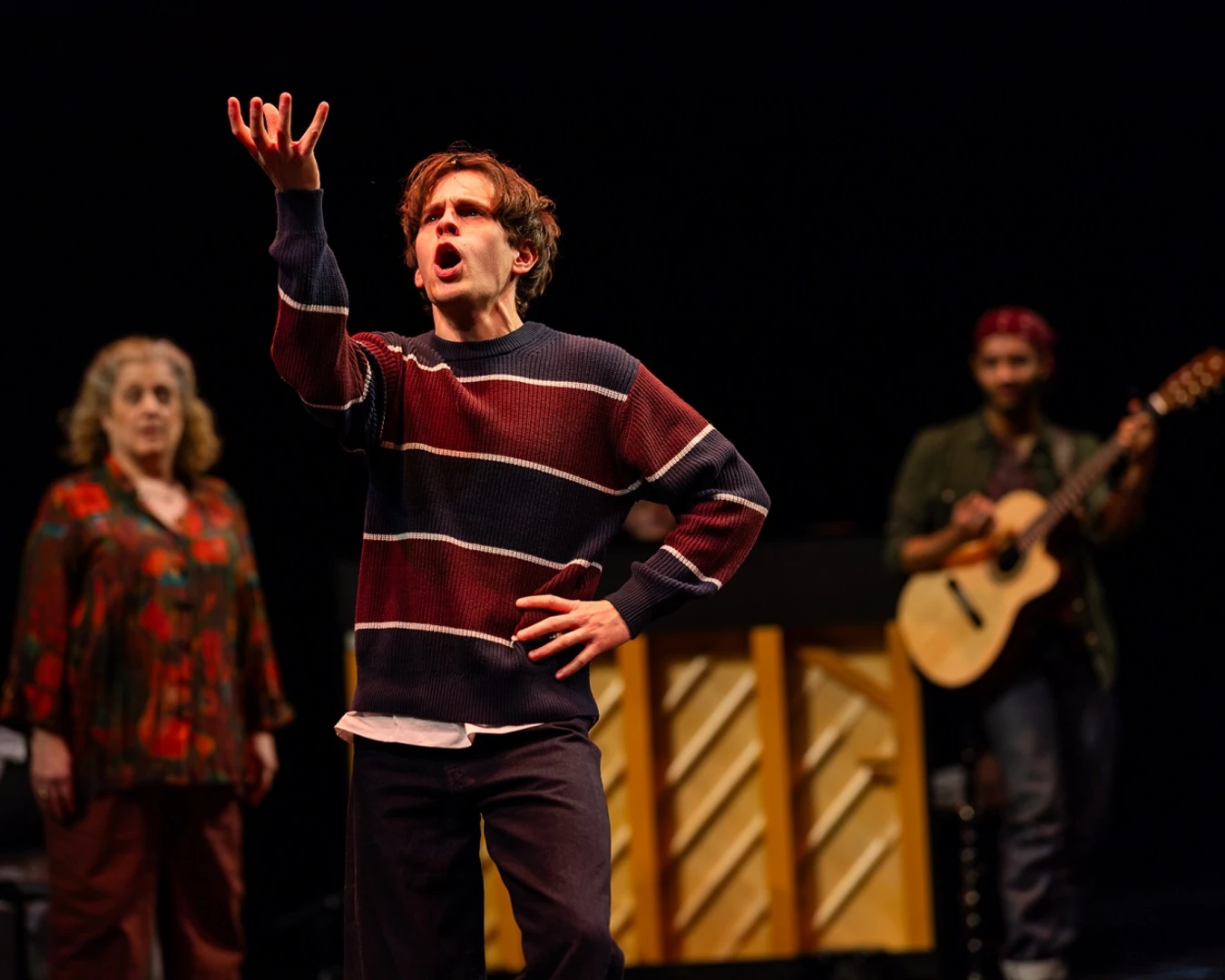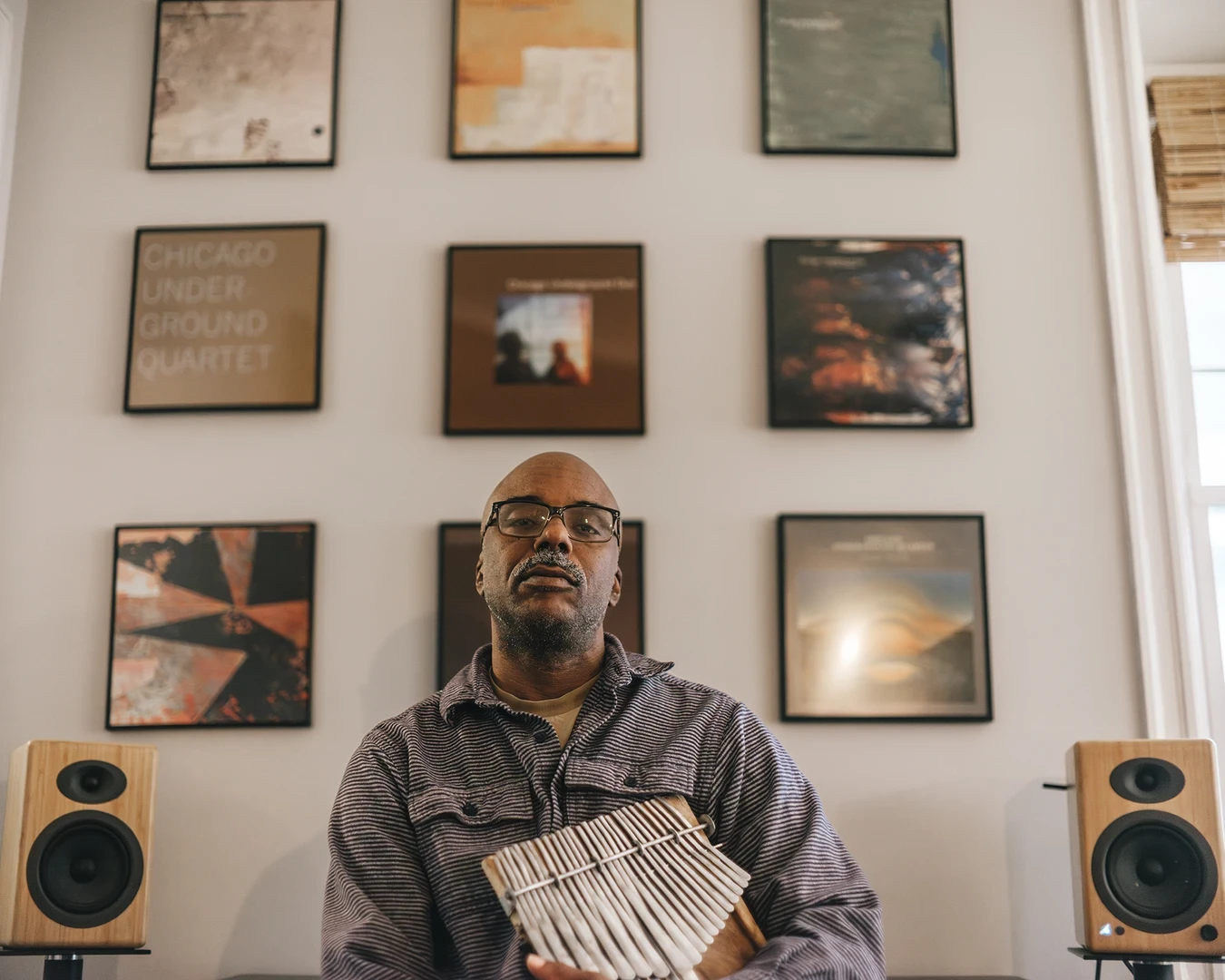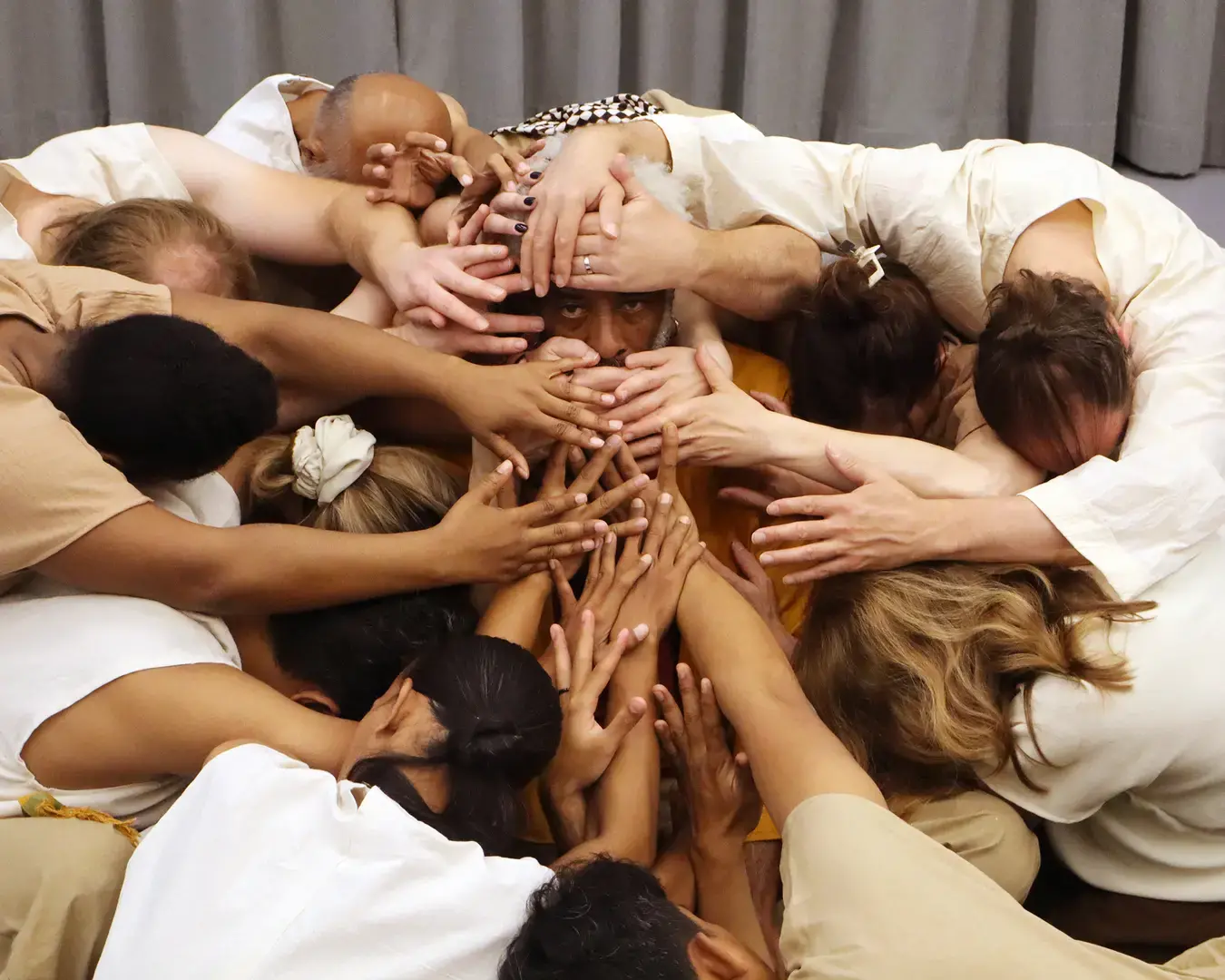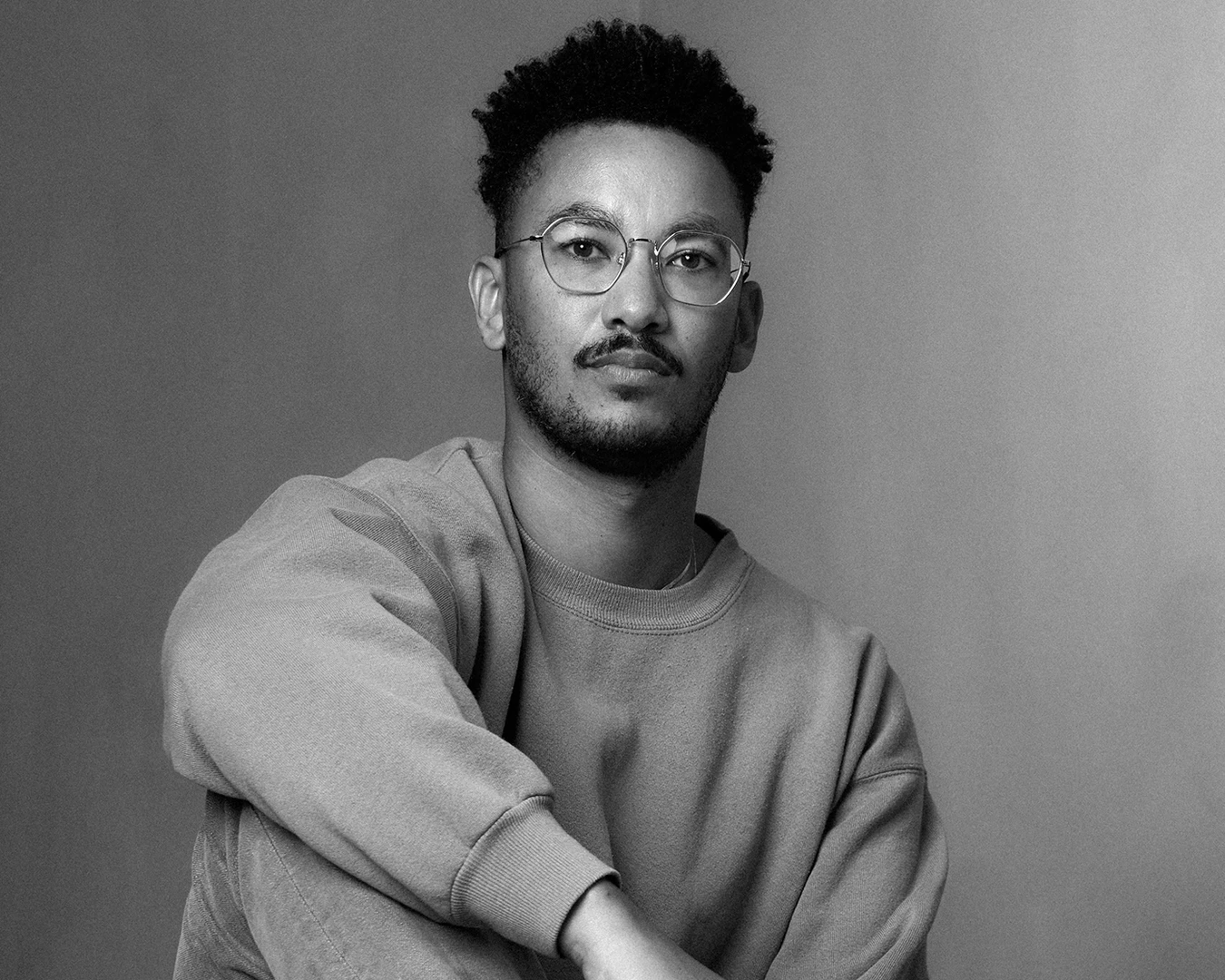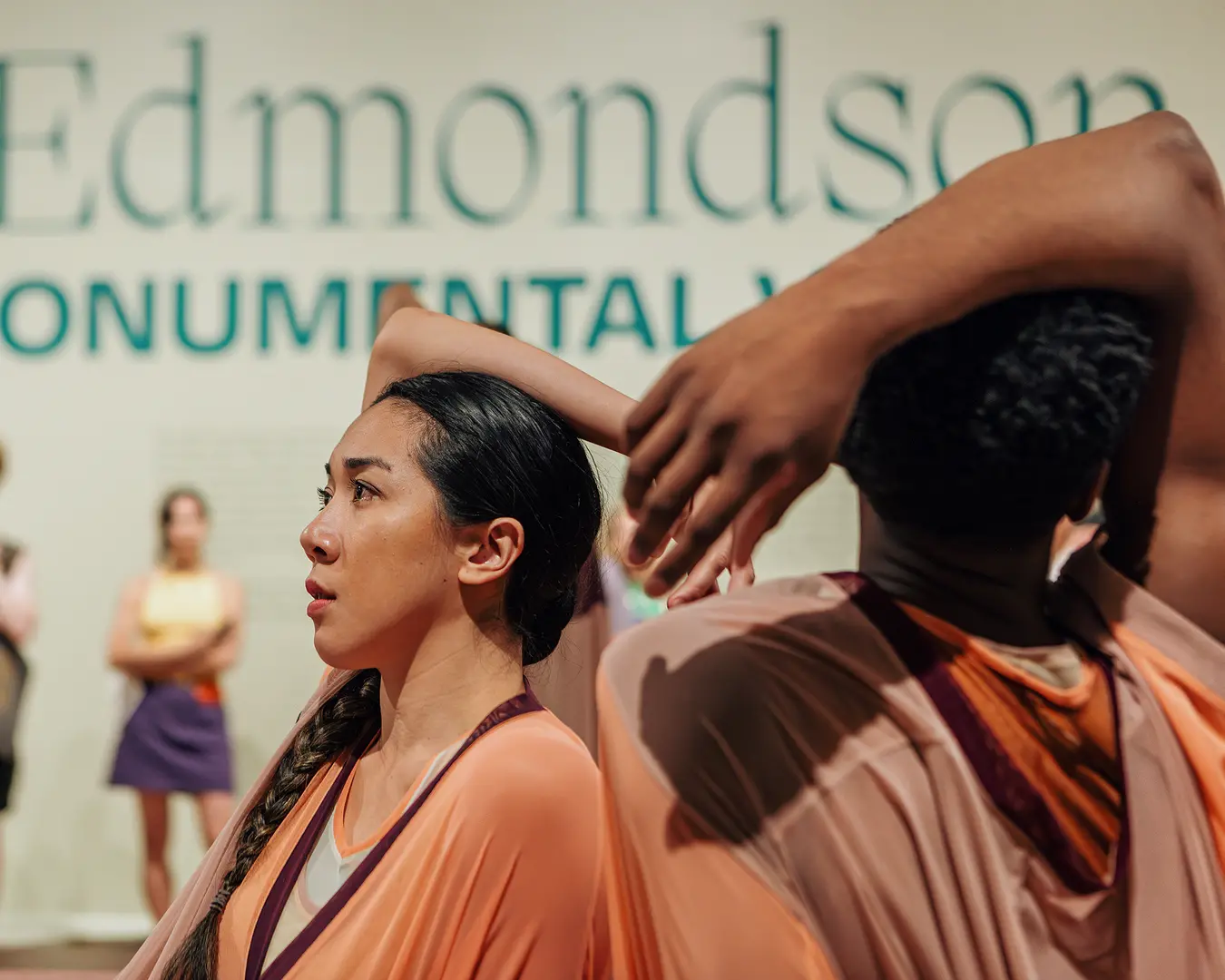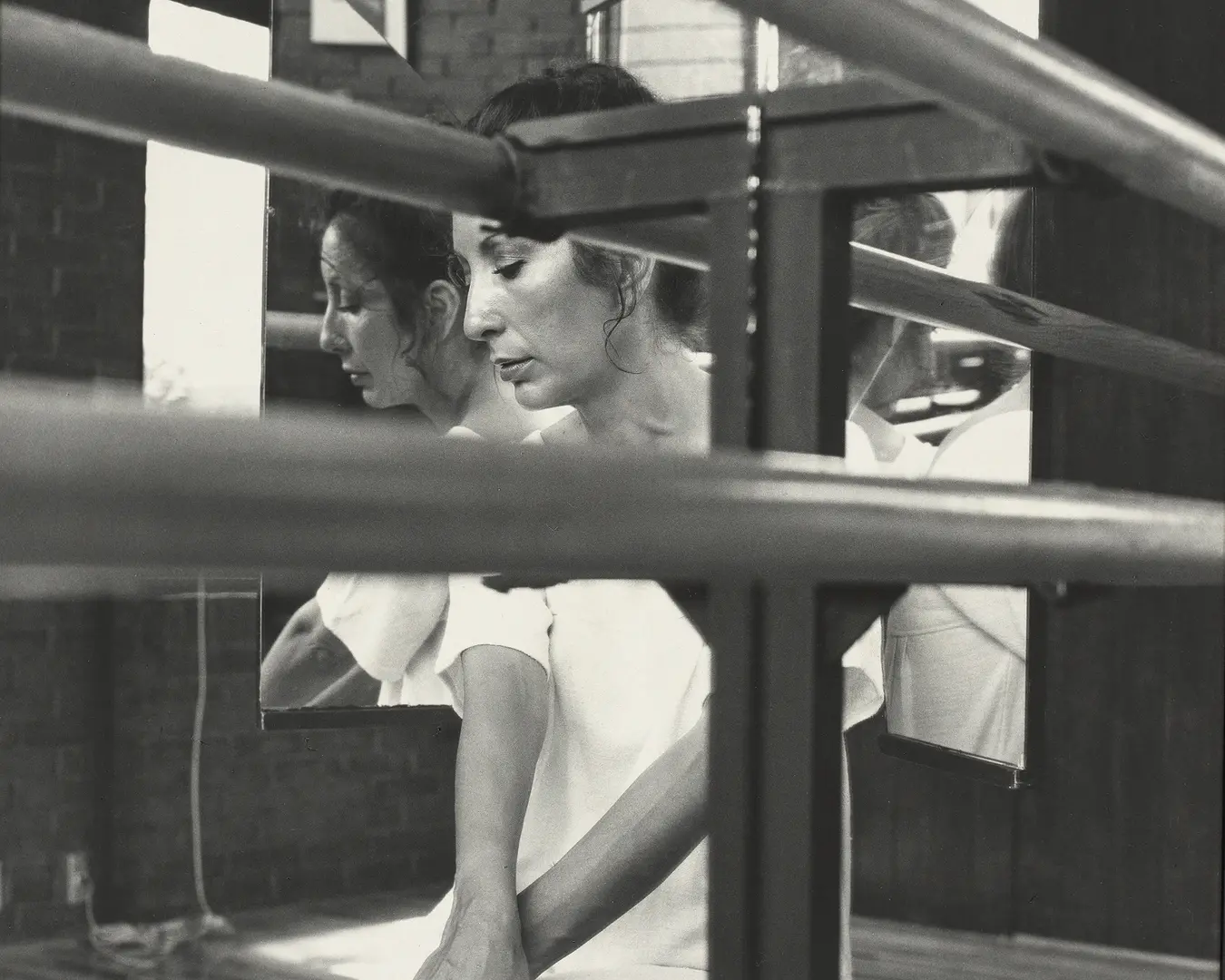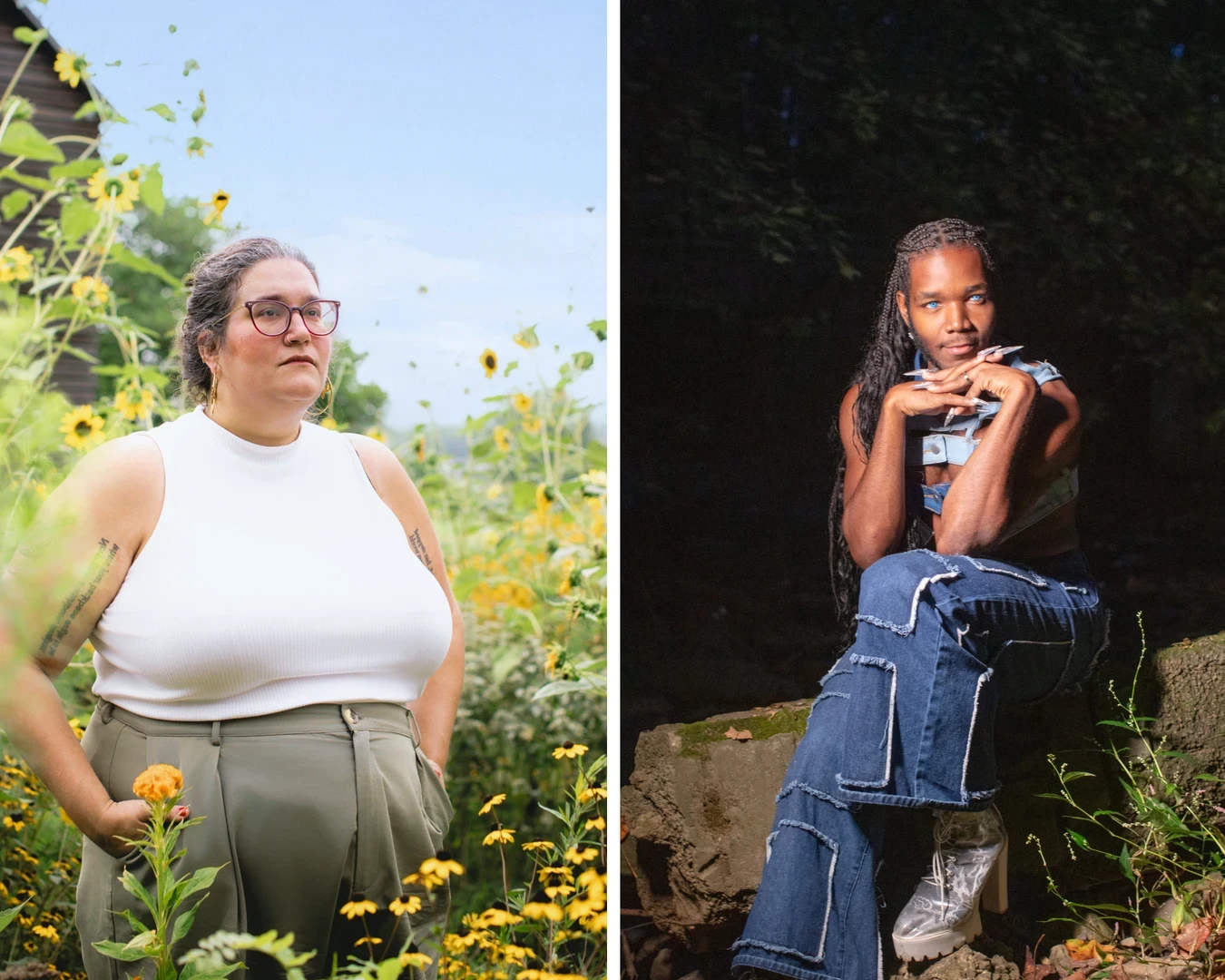Our “Fellows Friday” series focuses on the artistic lives of our Pew Fellows: their aspirations, influences, and creative challenges.
This week, we speak to Matthew Levy (2016) whose performance practice and compositions combine modern classical music with the rhythmic and improvisatory aspects of jazz, guided by his dedication to exploring the saxophone’s genre-defying capabilities. As a founder and co-artistic director of the PRISM Quartet, Levy has commissioned and premiered works by preeminent composers such as Julia Wolfe, Jennifer Higdon, William Albright, Steven Mackey, and Greg Osby. Levy has received composition fellowships from the Independence Foundation and the Pennsylvania Council on the Arts, as well as grants from the National Endowment for the Arts and American Composers Forum. Next month, Levy will perform with PRISM at The National Opera Center in New York City (April 1) and at Settlement Music School in Philadelphia (April 2) in honor of the release of Lee Hyla’s Paradigm Lost on PRISM’s new label, XAS Records.
How did you become an artist? Are there particular experiences that drove you to this choice?
I grew up in a culturally nurturing environment in Philadelphia, and was deeply influenced by several music teachers from early on. My parents, Julian and Mae, were artists/art teachers who first met as students at Tyler School of Art, next door to where I now teach at Temple University’s Boyer College of Music and Dance. Their own practices spanned oil painting, printmaking, pottery, stained glass, and photography. Seeing them create work was an everyday part of my childhood. They used to have other artists over and paint nude models while recordings of Mozart played in the background. Meanwhile, my oldest sister, Becky, eventually married drummer Jimmy Jones of the legendary Philly R&B band Breakwater. I was very much drawn to their music, and formed my own band with neighborhood kids the moment I picked up a saxophone at age 10. It was 1973. We called ourselves Atomic Power and played original funk for local gatherings. The bass player was eight years old and tended to fall asleep after dinner, putting a serious damper on rehearsals. We were especially proud of a song we co-wrote called “The Hustle and The Bustle.” Atomic Power was atrociously bad. An article in the Germantown Courier covering one of our nursing home appearances quoted one attendee as saying that “people who had not moved in years sat upright in bed.” Even so, it was exhilarating to create music, and to have a sense of its intrinsic power as an outlet for our most human experiences.
A few years later at Central High, I studied piano, theory, and composition with Italo Taranta, a devoted teacher who inspired me with his passion for classical music. One day in class, he played the opening movement of Beethoven’s “Eroica” symphony. I couldn’t believe my ears. The music unfolded with ingenuity and drama over an extended arc, culminating in an exhilarating dissonance.
I landed at the University of Michigan, where I spent much of the 1980s studying with America’s preeminent classical saxophonist, Donald Sinta, now retired. With the power of his example, Mr. Sinta demonstrated the meaning of commitment. His playing is breathtaking, combining a pure shimmering sound, brilliant technique, and consummate artistry. My days at Michigan also included private studies with members of an all-star composition faculty, including William Albright, William Bolcom, Fred Lerdahl, and Frank Ticheli. My desire to pursue music professionally was the culmination of all of these experiences.
What is your daily art-making routine?
That’s a big question. I bounce back and forth between practicing, composing, and producing and engineering recordings. As a saxophone player, of course I’m always learning new music, but I continue to focus on the fundamentals: scales and exercises in intonation, vibrato, articulation, overtones/altissimo, and extended techniques. It’s musical hygiene, a foundation that prepares one to navigate increasingly challenging repertoire. Like a basketball player practicing jump shots every day. Playing new classical music also requires a vast knowledge of non-classical music, since today’s concert composers are increasingly drawing on jazz, popular music, and a plethora of non-Western classical and folkloric music. This is especially true for the saxophone, since the culture of the instrument is so deeply rooted in jazz.
In my work as a composer, I approach each new piece a little differently. I’m currently writing for my group, the PRISM Quartet, who will be joined by jazz great Joe Lovano for concerts on June 3 and 4 at the Painted Bride Art Center in Philadelphia and (le) poisson rouge in New York City. We’ll record the piece for an album called Heritage/Evolution, Volume 2, also featuring Chris Potter and Ravi Coltrane. Over the past few weeks, I’ve been sitting at the piano and improvisatorially working through a series of harmonic progressions and melodic ideas. I’ll begin notating the music when I complete the structure and have most of the basics worked out. The process of notating the music always leads me in new directions, as I recognize what works and what doesn’t while sculpting the details.
I’m also in the midst of producing several recordings for PRISM and our newly launched label, XAS Records. At any given time, we have half a dozen recordings in the pipeline. So I’m editing and mixing audio, often in partnership with composers, players, and other engineers. I look at my work in post-production as an extension of my playing: interpreting music to create an ideal representation of a composer’s vision.
As the executive and co-artistic director of PRISM, I spend a big chunk of each day administering our non-profit: producing concerts, developing grant applications, planning educational and outreach programs, etc. My favorite part of this work is developing curatorial concepts that form a foundation for new commissions and collaborations. Curatorial work, as much as PRISM’s performance practice, is core to our identity. We’re always exploring new frontiers, and are increasingly working across musical, disciplinary, and technological boundaries to redefine the possibilities of our medium.
You work in various roles: as a musician, a composer, and a commissioner and producer of new music. What motivates your artistic practice across these roles? What do you hope to convey with your work?
My interest in many facets of the music industry is born partly out of necessity and a desire for independence from risk-averse concert presenters and record labels, but also from a genuine aspiration to coalesce interconnected roles to realize my creative concepts. I usually start with a curatorial idea, like PRISM’s recent [Center-funded] Color Theory project, in which we collaborated with Sō Percussion and the Partch ensemble on a series of microtonal commissions exploring musical color, through new combinations of saxophones, percussion, and Harry Partch instruments. We conducted a dozen educational programs, interactive workshops, and scholarly panel discussions, and recorded the commissions for a release on XAS this March. These kinds of projects are long-term commitments because they touch on every facet of PRISM’s mission—live performance, education and outreach, and recording—and necessitate a great deal of planning and fund-raising. My goal is to maximize the impact of music that we create, to share it with audiences at home and around the world, to demonstrate the beauty and power of our medium, and to be a champion for living composers and the saxophone itself, which is still seeking acceptance in the field of classical music.
My compositional interests inform my work as both a performing artist and curator. Adolphe Sax invented the saxophone as a sonic bridge between different families of wind instruments, but I also see it as a bridge between different musical and cultural traditions. As a composer, I’ve worked to chart fresh musical territory by blurring stylistic boundaries. Much of my music marries techniques, developmental processes, and extended forms of modern classical music with rhythmic and improvisatory aspects of jazz. My intent is for both improvised and composed music to evolve simultaneously on organic, parallel paths.
What is perfection to you, in the context of your work?
I think of perfection as a journey to an unreachable destination. Like the horizon, the destination moves continuously out of reach as you approach it, because the very pursuit illuminates a new landscape of possibilities. The evolution of PRISM’s sound is a good example. As four individual saxophonists, we’re constantly testing the limits of our performance practice. We play a consort of Selmer saxophones, but are always assessing our equipment—from the type of metal or plating on the instruments’ necks, to the form of resonators and leather on the pads, to the exact make, materials, and specifications of our mouthpieces, reeds, ligatures, and thumb rests. Individually, we’re trying to eke out just a little more beauty from our instruments, that final one percent, to find a magic combination in which our sounds meld like the world’s most resonant church organ. It is an obsessive, never-ending exploration.
If you could collaborate with anyone alive today, who would it be?
For me, that’s more of a practical than hypothetical question. I keep and frequently draw on an artistic planning document with a list of potential collaborators—composers, ensembles, orchestras, solo artists, visual artists, dance companies, programmers, and electronic instrument makers. I’m always thinking about new curatorial ideas or new iterations of successful projects that I previously curated or co-curated. The document also includes a running list of composers PRISM would like to engage for stand-alone commissions, including Chaya Czernowin, Unsuk Chin, Maria Schneider, Jason Moran, Tristan Murail, Wayne Shorter, Steve Reich, and George Crumb. Aesthetically, we’re all over the map, but all of the composers I hope to work with create music that is unmistakably original, visceral, and speaks to me in some personal way.
Why do you choose to work and live in Philadelphia? In your experience, what makes this art scene distinctive?
I’m from Philly. I grew up in Germantown, in the Northwest part of the city, and still live there with my wife, Willa. I like its diversity and history, and having everyday interactions with people from all walks of life. We have our problems in Philly, especially with poverty and crime (which are, of course, interconnected), but living in Germantown affirms my belief that we are one community. I like Philadelphia’s gruffness and lack of pretense. People are direct and don’t suffer fools.
Philly has an incredible music scene with one of the world’s great symphonies and conservatories in the Philadelphia Orchestra and Curtis Institute of Music, and a plethora of wonderful presenters and ensembles, covering everything from Carnatic and Arabic music, to Renaissance wind band repertoire, and experimental jazz, new classical, choral, and opera. There is not one institution that makes the scene distinctive; it’s a constellation of very specific stars. When you also consider Philly’s world-class museums, theaters, dance companies, and historic sites, we have an embarrassment of riches. Philly is a big city, but feels intimate. Even the city’s largest cultural institutions are very approachable and open to collaborating. We also have a very generous philanthropic community whose support has helped me to make many of my artistic dreams come true. It’s hard to imagine living anywhere else.
